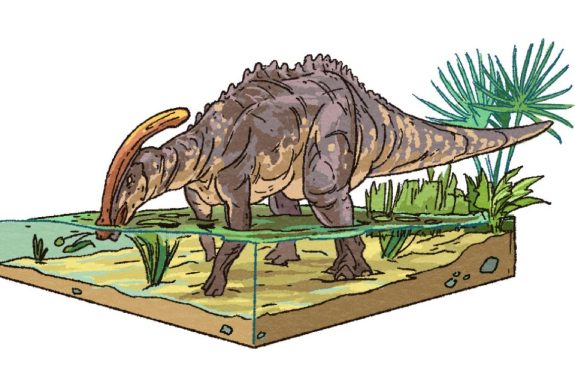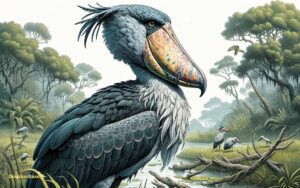What Makes a Dinosaur a Dinosaur: A How-To Identification Guide
Dinosaurs are identified by their unique hips, legs beneath their bodies, and specific vertebral and limb features. These characteristics distinguish them from other prehistoric animals.
Understanding what makes a dinosaur a dinosaur captivates both amateur and professional paleontologists alike.
This simple yet effective guide will unlock the secrets of dinosaur identification, crucial for navigating the vast world of paleontology.
Discovering these ancient creatures involves examining their skeletal structure, primarily the hips and legs, which reflect their evolution and adaptation.
Unique vertebral structures and limb configurations offer additional clues. With this foundation, anyone can begin to differentiate dinosaurs from other prehistoric reptiles, establishing a deeper appreciation for these incredible creatures that once ruled the Earth.
Embrace the journey into the Mesozoic era and transform your curiosity into knowledge with this concise identification guide.

Defining Characteristics Of Dinosaurs
Ever wonder what exactly makes a dinosaur a dinosaur? Dinosaurs once ruled the Earth. But not every ancient beast falls into this category. To clear things up, let’s dig into the key features that set these creatures apart.
Anatomical Traits
Dinosaurs have unique body features that help scientists recognize them. Think of a jigsaw puzzle where each piece must fit perfectly. Dinosaurs have such ‘puzzle pieces’ in their skeletons.
- Upright posture: Large sockets in the hips for legs beneath the body.
- Three main limb bones: Each leg with a distinct femur, tibia, and fibula.
- Hole in the hip socket: A defining dinosaur trait.
- Claws and hands: Variations based on their diet and lifestyle.
Dinosaurs displayed a variety of horned, crested, or plated skulls. These features help paleontologists group dinosaurs into different families. Match a fossil to the traits above, and you might just have a dinosaur!
Evolutionary Lineage
Dinosaurs come from a specific evolutionary line that can be traced back over 230 million years. The Dinosauria clade groups these ancient animals together.
| Ancestor Traits | Evidence in Dinosaurs |
|---|---|
| Archosaurs branch | Teeth set in sockets, certain skull openings. |
| Earliest dinosaurs | Evidence of two major groups: Saurischia and Ornithischia. |
By exploring where dinosaurs fit on the tree of life, scientists can uncover their kinship with other ancient creatures. Not every big reptile is a dinosaur. True dinosaurs follow this specific ancestral path.
Decoding The Fossil Record
- Welcome to the fascinating world of ancient giants.
- Learning about dinosaurs starts with fossils.
- Fossils are like nature’s history book.
- They tell us about creatures from millions of years ago.
- Let’s dive into this world and uncover the secrets of the past.
Types Of Fossils Unearthed
- Body Fossils: Actual parts of the dinosaur, like bones and teeth.
- Trace Fossils: Footprints, nests, or even poop!
- Molecular Fossils: Chemical remains or DNA fragments.
Interpreting Fossil Clues
We use fossils to learn about dinosaur life. Each fossil piece gives us a clue.
| Fossil Type | Information Provided |
|---|---|
| Bones | Size, strength, and possibly how they moved. |
| Teeth | Diet – were they eating plants or meat? |
| Footprints | Walking style, speed, and behavior. |
Dinosaurs are a diverse group.We need to find many clues to learn about them.
The Dinosaur Era: Mesozoic Epochs
Dinosaurs roamed the Earth during the Mesozoic Era, a time split into three major periods. These periods marked the development, flourishing, and eventual diversification of dinosaurs.
Discover the characteristics that shaped the lives of dinosaurs across this era. Educators, students, and enthusiasts alike can grasp the grand timeline of these ancient creatures.
Triassic Period Beginnings
The Triassic Period heralded the dawn of dinosaurs. This epoch set the stage for dinosaur evolution and spread. Think of this as the birth of the dinosaur dynasty.
- Date Range: Approximately 252 to 201 million years ago
- Climate: Variable, generally arid
- Notable Genera: Plateosaurus, Coelophysis
Jurassic Period Flourishment
The Jurassic Period saw the rise of iconic giants. During this time, dinosaurs dominated the land. Ferns, cycads, and conifers were the prevalent plant life.
| Features | Details |
|---|---|
| Date Range: | 201 to 145 million years ago |
| Climate: | Warm and humid |
| Famous Dinosaurs: | Brachiosaurus, Stegosaurus |
Cretaceous Period Diversity
Diversity exploded in the Cretaceous. Both herbivorous and carnivorous dinosaurs saw new forms and adaptations. Flowering plants emerged here for the first time.
- Time Span: 145 to 66 million years ago
- Environments: Rich ecosystems with varied landscapes
- Iconic Dinosaurs: Tyrannosaurus rex, Triceratops
Separating Dinosaurs From Reptiles And Birds
Today, we’re embarking on a journey millions of years back in time. Our mission: to determine what truly makes a dinosaur a dinosaur.
This task can be tricky, given that dinosaurs are often lumped together with other ancient creatures. But fear not!
With a keen eye on certain characteristics, we can distinguish these majestic beasts from their reptilian cousins and avian descendants.
Physical Differences
Dinosaurs exhibit unique physical features that set them apart from other reptiles and birds. Let’s focus on their stand-out traits:
- Dinosaurs stood upright: Their legs were directly underneath their bodies, unlike the sprawling limbs of modern reptiles.
- Skeletal structure: Dinosaurs had a hole in their hip socket, a trait absent in other reptiles.
- Three main groups: Dinosaurs are split into Sauropodomorphs (long necks), Theropods (mostly bipedal), and Ornithischians (bird-hipped dinosaurs).
This framework helps us categorize dinosaurs more accurately.
Genetic Evidence
Unearthing the genetic ties among dinosaurs, reptiles, and birds allows us to map out their lineage:
| Group | Genetic Marker | Relation to Dinosaurs |
|---|---|---|
| Reptiles | Scales | Ancestral link |
| Birds | Feathers | Descendants |
| Dinosaurs | Mix of traits | Unique subset |
Genetic markers help confirm the evolutionary path from dinosaurs to birds, distinct from other reptiles.
Behavioral Distinctions
Behavior provides clues to the lives of dinosaurs separate from reptiles and birds. Consider these behaviors:
- Nesting: Some dinosaurs had bird-like nesting habits, yet their methods were unique.
- Social structure: Evidence suggests certain dinosaurs were social creatures, forming herds unlike solitary reptiles.
- Hunting: The predatory tactics of Theropods were much more complex than those of contemporary reptiles.
These behaviors underscore the distinctiveness of dinosaurs within the prehistoric world.
Modern Descendants: Linking Birds To Dinosaurs
Have you ever looked at a bird and wondered if it could be a relative of giant dinosaurs? Birds flapping their wings in the sky are actually living links to the prehistoric past. This section unwraps the fascinating connection between birds and their dinosaur ancestors.
Evidence Of Avian-dinosaur Connection
Fossils show us a clear picture. They reveal how dinosaurs evolved into birds. Scientists study these fossils closely. They find unique features in dinosaurs that only birds display today.
- Feathers: Some dinosaurs had them. Just like birds today.
- Brooding behaviors: Similar to how birds protect their eggs.
- Bone structures: Hollow bones in dinosaurs match those in birds.
Genetic similarities strengthen the bird-dinosaur link. Modern techniques compare their ancient genes. This adds more proof to the pile.
Characteristics Shared By Birds And Dinosaurs
Birds and certain dinosaurs have lots in common. These shared traits hint at a deep connection. Let’s explore what they share:
| Birds | Dinosaurs |
|---|---|
| Wishbone | Theropods had this Y-shaped bone too |
| Three-toed limbs | Many dinosaurs walked on three toes |
| Laying eggs | Egg fossils connect them to birds |
Scales on legs stand out too. Look at a bird’s legs and you’ll see a dinosaur feature. Think about a chicken’s scaly legs next time you visit a farm!
So next time you see a bird soaring or perching, remember that you’re witnessing the age-old dance of dinosaurs among us.
Understanding these links helps us appreciate our feathered friends as direct descendants of the thunder lizards that once roamed the Earth.
Spotting A Dinosaur In The Field
Welcome to your very own Jurassic journey! Imagine wandering through ancient landscapes, on the lookout for creatures that once roamed the Earth.
“Spotting a Dinosaur in the Field” isn’t about seeing live dinosaurs, of course — it’s about recognizing the clues they left behind. Grab your paleontologist hat! Let’s discover the world of dinosaurs together.
Recognizing Dinosaur Habitats
Dinosaurs lived in various environments. Your quest begins by understanding these ancient worlds. Look for areas where dinosaurs might have thrived. Think rivers, lakes, and vast plains.
Here’s what to spot:
- Sedimentary rock layers: Dinosaurs often lived near water sources. Sedimentary rocks like sandstone or shale may hide dinosaur bones.
- Fossil clues: Teeth or eggshells can surface in old riverbeds or lake shores.
- Footprints: Muddy areas might have preserved dinosaur tracks.
Identifying Fossilized Remains
Dinosaur remains can be elusive. The thrill is in the hunt! Find a fossilized bone or a tooth? Compare its size and shape to known dinosaur species.
Here’s a simple guide:
| Type | Features | Common Fossils |
|---|---|---|
| Bones | Hollow, large | Thighbones, skull fragments |
| Teeth | Serrated edges for carnivores, flat tops for herbivores | Isolated teeth, jawbones |
| Tracks | Three toes for many species | Footprint tracks, tail marks |
Remember, each discovery tells a story millions of years old. By recognizing habitats and identifying fossils, you’re piecing together the grand tale of dinosaurs. Ready to begin your prehistoric adventure?
Contributing To Paleontology
Contributing to Paleontology is not just for scientists in dusty jackets wielding pickaxes. Anyone with a love for dinosaurs can play a role.
You might be asking, “Can I really contribute?” Yes! This fascinating field welcomes enthusiasts of all ages to participate. Discover how your passion can aid in unraveling the mysteries of these ancient creatures.
Citizen Science Opportunities
Imagine finding a dinosaur bone in your backyard or helping to identify a new species from your computer. Citizen science projects offer you the chance.
These projects are tools to connect the public with scientific research. You do not need a PhD to participate.
- Join a Fossil Dig: Work alongside professionals at a dig site.
- Online Data Analysis: Help classify dinosaur bones from your home.
- Education Programs: Learn and then teach others about dinosaurs.
Supporting Dinosaur Research
Your support is crucial for the ongoing study of dinosaurs. Funding and resource contributions drive research forward. See the table below for ways to help.
| Method of Support | How It Helps |
|---|---|
| Donations: | Funds expeditions, equipment, and analysis. |
| Volunteering: | Offers manpower and spreads awareness. |
| Museum Membership: | Boosts educational initiatives and exhibits. |
Consider donating to museums or university programs. Volunteer for local digs or educational events. Your help shapes future paleontological discoveries.

Credit: www.sciencefriday.com
Is Identifying Sauropod Dinosaurs the Same as Identifying Other Types of Dinosaurs?
Identifying sauropod dinosaurs techniques are unique due to their distinct physical traits, such as long necks and tails, large body size, and specific bone structures. Unlike other types of dinosaurs, these features help paleontologists easily differentiate sauropods from other dinosaur species when examining fossil remains.
Frequently Asked Questions For What Makes A Dinosaur A Dinosaur: A How-to Identification Guide
How Can You Identify A Dinosaur?
To identify a dinosaur, check for specific characteristics like large body size, hindlimb-dominated movement, unique hip structures, and teeth suggesting a herbivorous or carnivorous diet. Examine fossils in museum collections or scientific publications for comparison.
What Classifies A Dinosaur As A Dinosaur?
Dinosaurs are a group of reptiles characterized by their upright stance, with legs positioned directly beneath the body. They lived during the Mesozoic Era and typically had a unique hip structure, which sets them apart from other ancient reptiles.
What Identifies As A Dinosaur?
Dinosaurs are prehistoric reptiles characterized by their distinctive hips, legs situated directly below their bodies, and life predominantly during the Mesozoic Era.
How Do We Know Dinosaurs Were Called Dinosaurs?
The term “dinosaurs” was coined in 1842 by Sir Richard Owen to describe these prehistoric reptiles, reflecting their “fearfully great” nature.
Conclusion
Understanding what classifies a creature as a true dinosaur can be fascinating. This guide has illuminated key identifying features, from hip structure to egg fossils.
Armed with this knowledge, you can now delve into the prehistoric world with confidence. Remember, every bone and footprint holds a story, waiting to be unearthed.
Keep exploring!





